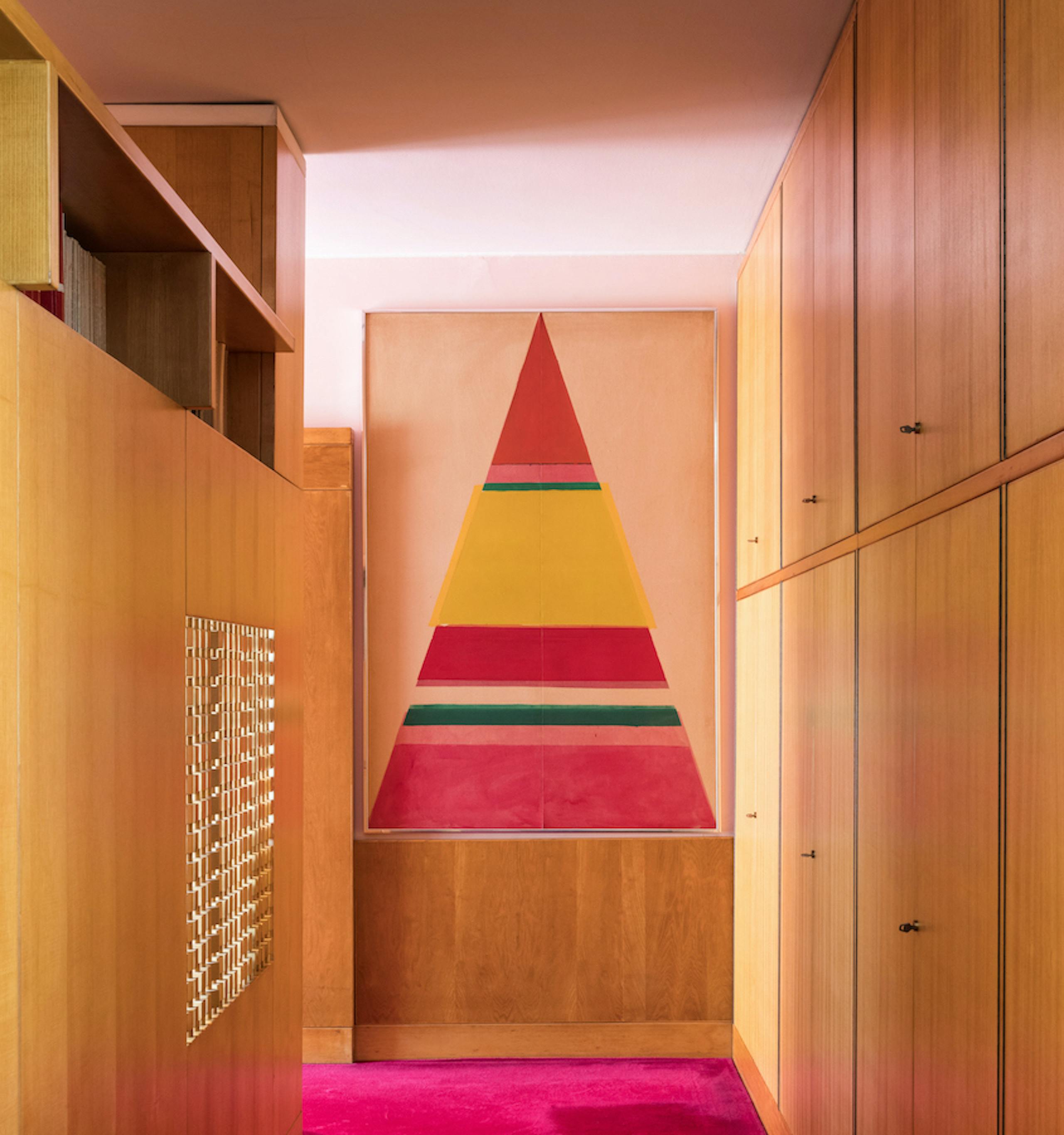
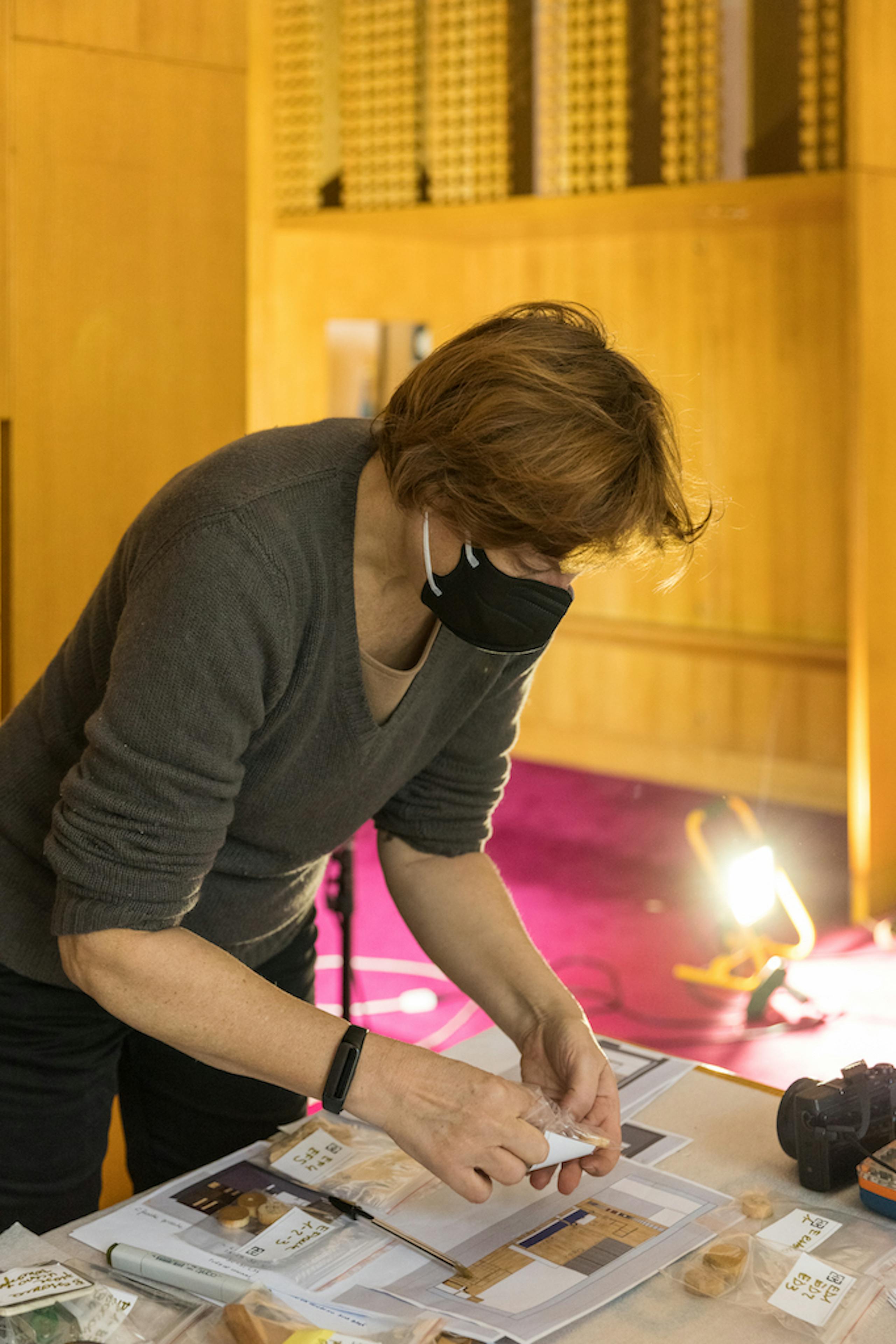
© Triennale Milano
In what way was Ettore Sottsass’ Casa Lana moved into Triennale Milano?
Triennale Milano’s restorer Alessandra Vannini describes the complex process of disassembling and reconstructing the living room area of Casa Lana – a Milanese home created by designer Ettore Sottsass in the 1960s – which can be visited today on the first floor of the Palazzo dell’Arte. Architect Luca Cipelletti has been involved in the project by helping set up the display, in collaboration with Studio Sottsass and with the support of Barbara Radice Sottsass.
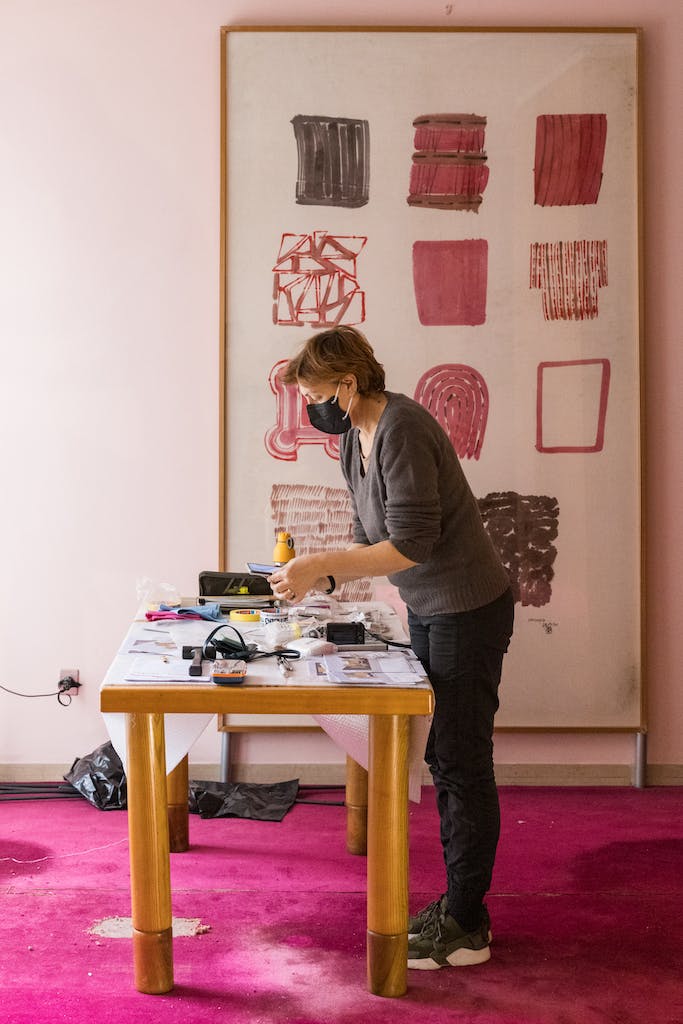
© Triennale Milano
What did you think when you first set eyes on Casa Lana?
Together with restorer Rafaela Trevisan, as the restoration workshop of Triennale Milano we have been thrilled about this project right from the start. Casa Lana is not just a design project, but a kind of art installation. The home was preserved in good condition and, the moment we entered, it felt like we were taking a leap back in time. All the details, decorations and furniture perfectly preserved the original 1960s style.
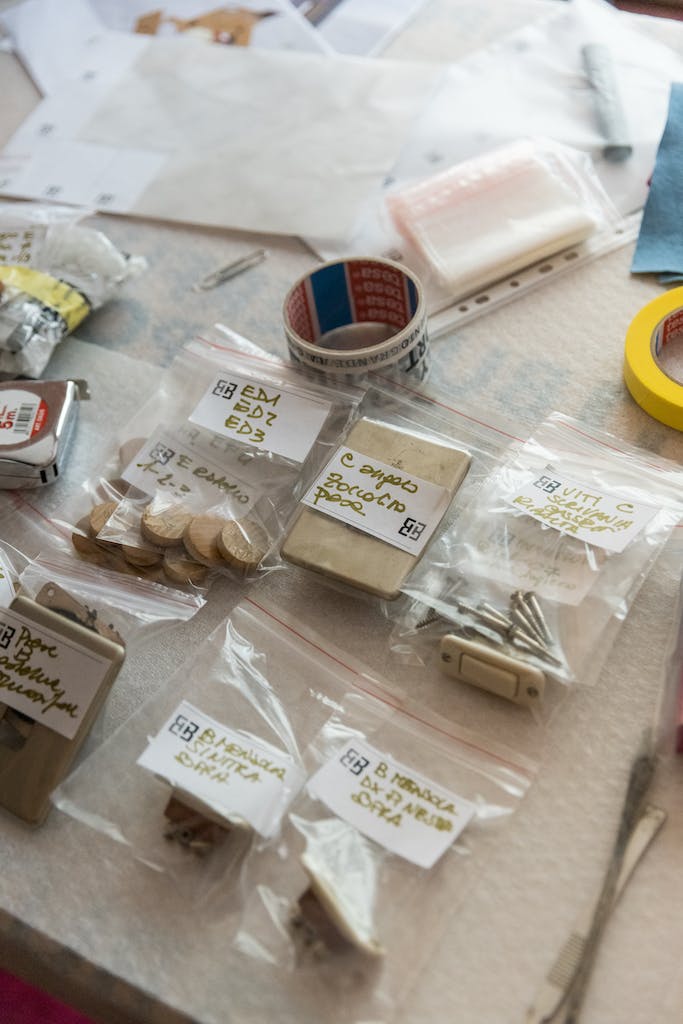
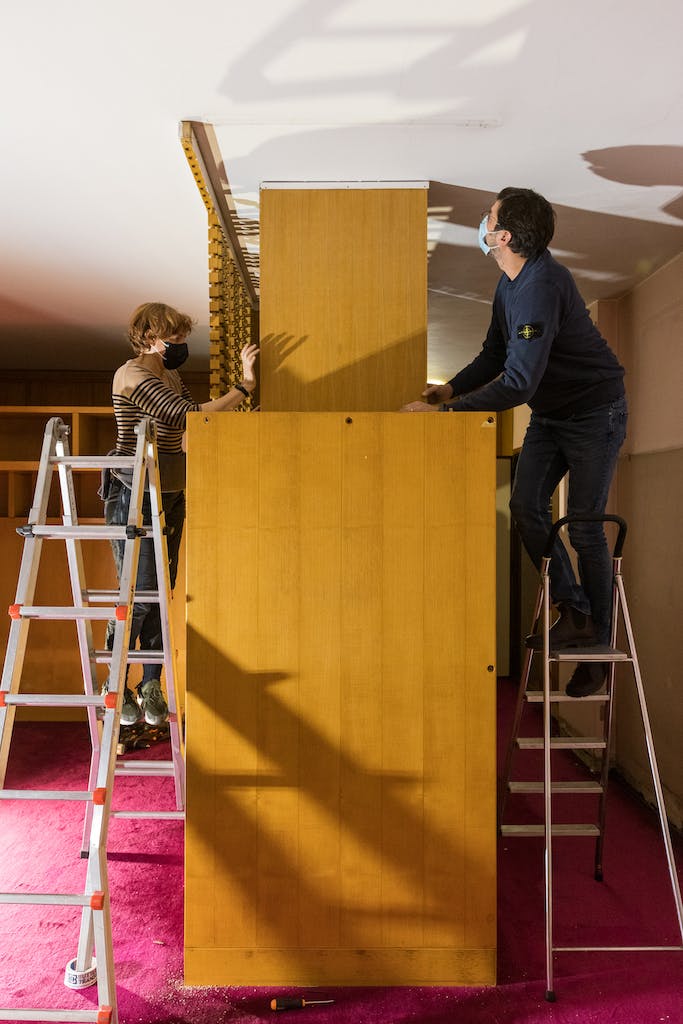
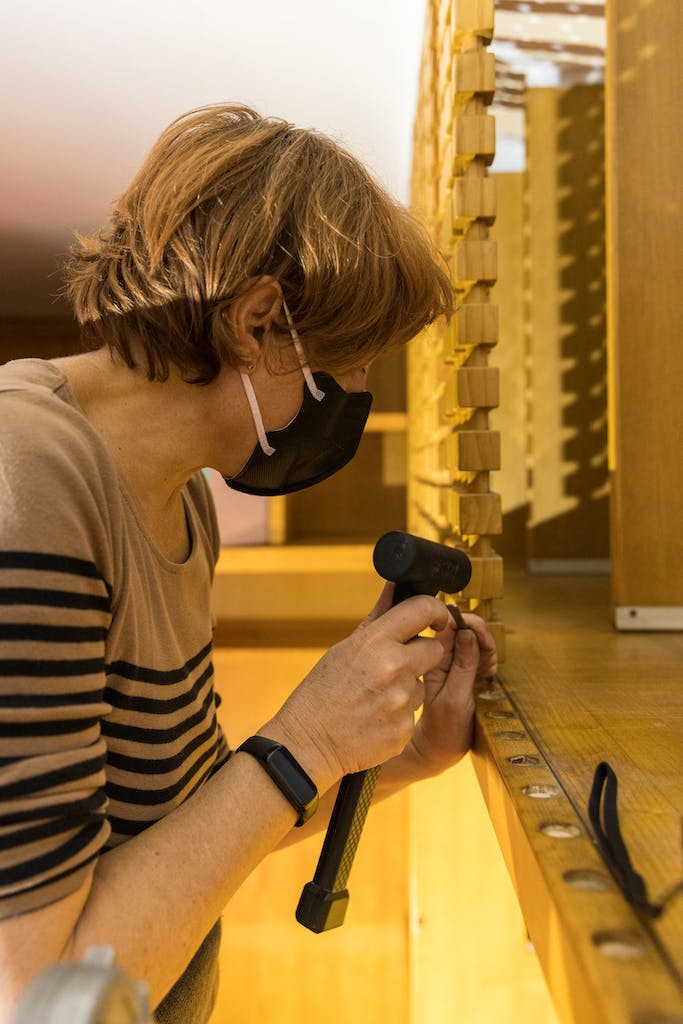
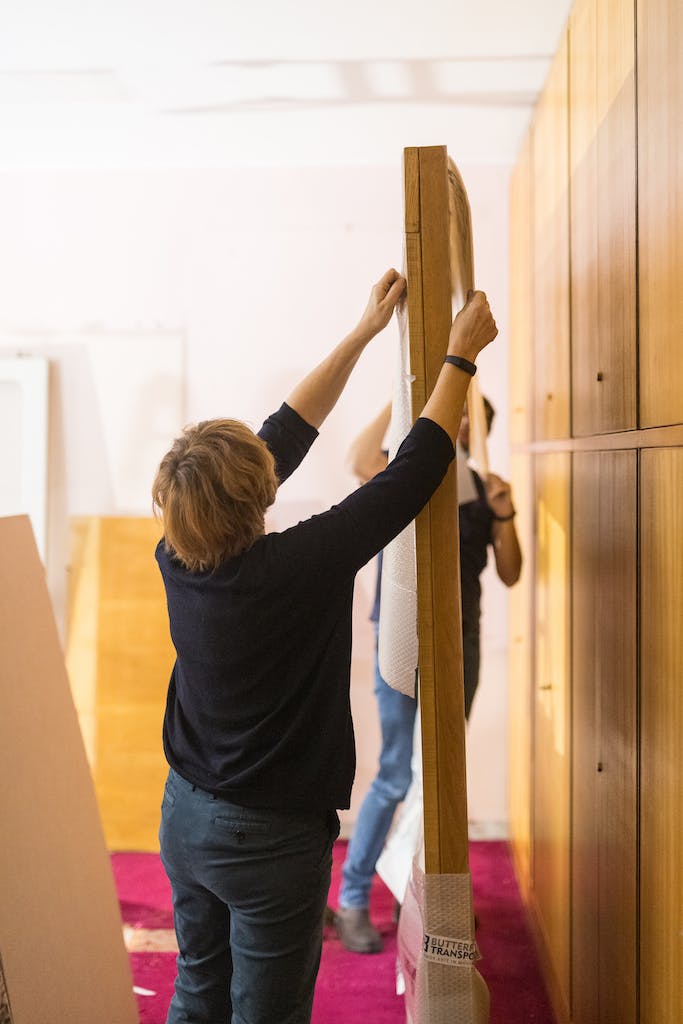
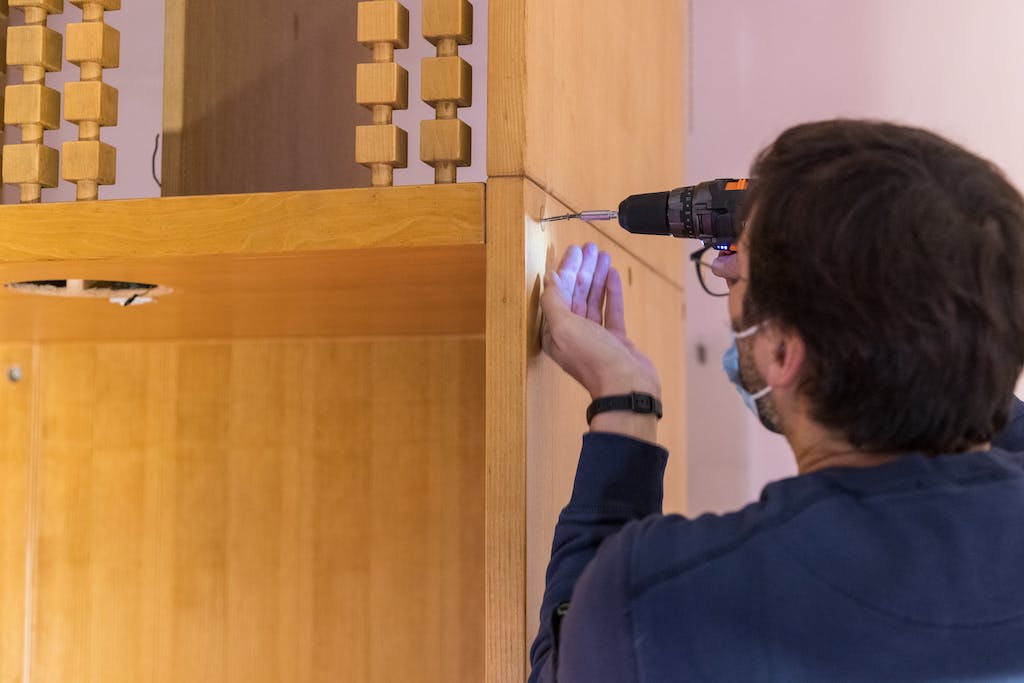
How did you plan the transfer of the living room from Casa Lana to Triennale?
It is important to bear in mind that we did not have a handbook showing how to assemble and disassemble the furniture, so each piece to be removed was like a constant discovery and surprise. We reckoned that the best thing to do – as the pieces were being disassembled – was not simply to begin cataloguing each individual component, but to create a sort of assembly manual: a very detailed rendering describing the exact position of each individual piece.
The difficulty with this project lay in the fact that all the various parts of the structure, all the anchoring and assembly parts, were totally concealed. When you look at the living room, it gives the impression of being one piece, but in fact all the technical and structural details, as well as the electrical system, are perfectly camouflaged. For example, all the bolts keeping the vertical and horizontal dividers together are covered in wooden blocks that serve as end caps. We were forced to find non-invasive solutions, to avoid damaging anything.
How long did it take you to complete the project?
In October 2021 we carried out our first inspection, with an initial assessment of the condition of each piece. The wooden doors on the furniture were the parts most in need of restoration: in addition to the signs of wear left by daily use, the heat from the indoor lighting system had caused the varnish to flake off from the wood. The whole living room structure is made of ash wood: a quality material that had kept beautifully over the years, but needed to undergo deep cleaning. Poltronova instead helped us renovate the upholstery of the red-violet sofa, which was very frayed. Around mid-November we began disassembling the living room and reassembling it on the first floor of Triennale Milano. By early December 2021, Casa Lana had been perfectly reconstructed.
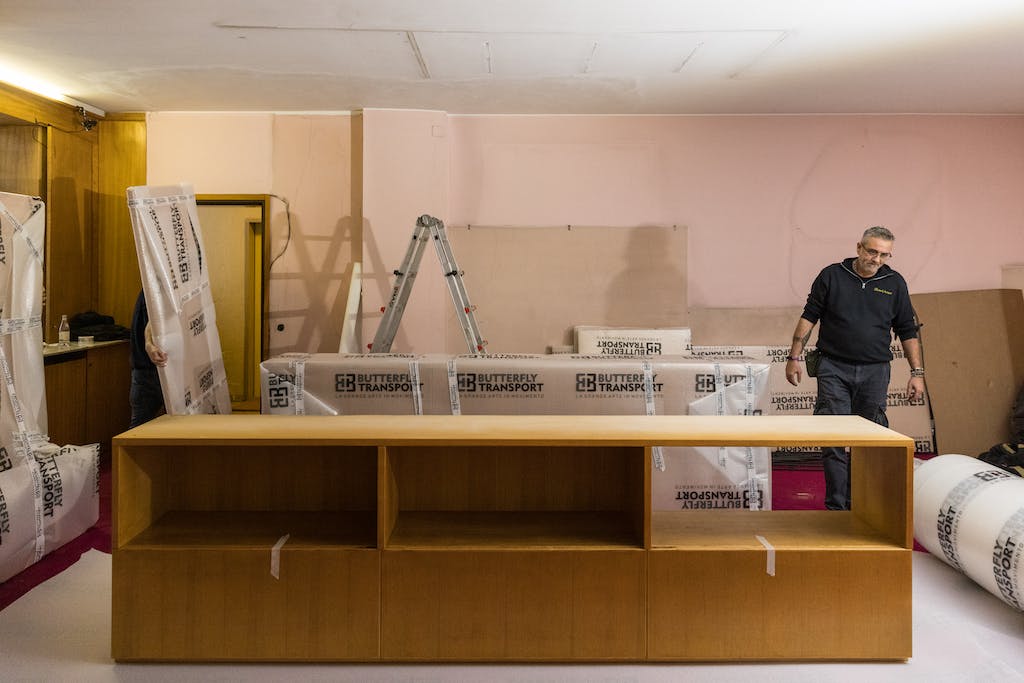
© Triennale Milano
A little-known curiosity about Casa Lana?
The Casa Lana living room is a space of 62 m2 designed to be enjoyed at any moment of the day – studying or working at the desk, relaxing at the piano or in front of the television, resting on the long sofas, or sitting at the table with friends. Something that struck me in particular was a truly unique detail: in the entrance of Casa Lana – under the decorative panel he created – Sottsass had a light switch installed on the wall a few centimetres above the floor. This switch was designed with convenience in mind: when you get back home in the evening, you’re often carrying things – the groceries, say, or an umbrella, or a handbag – which is why you can throw the switch in the entrance with your feet.
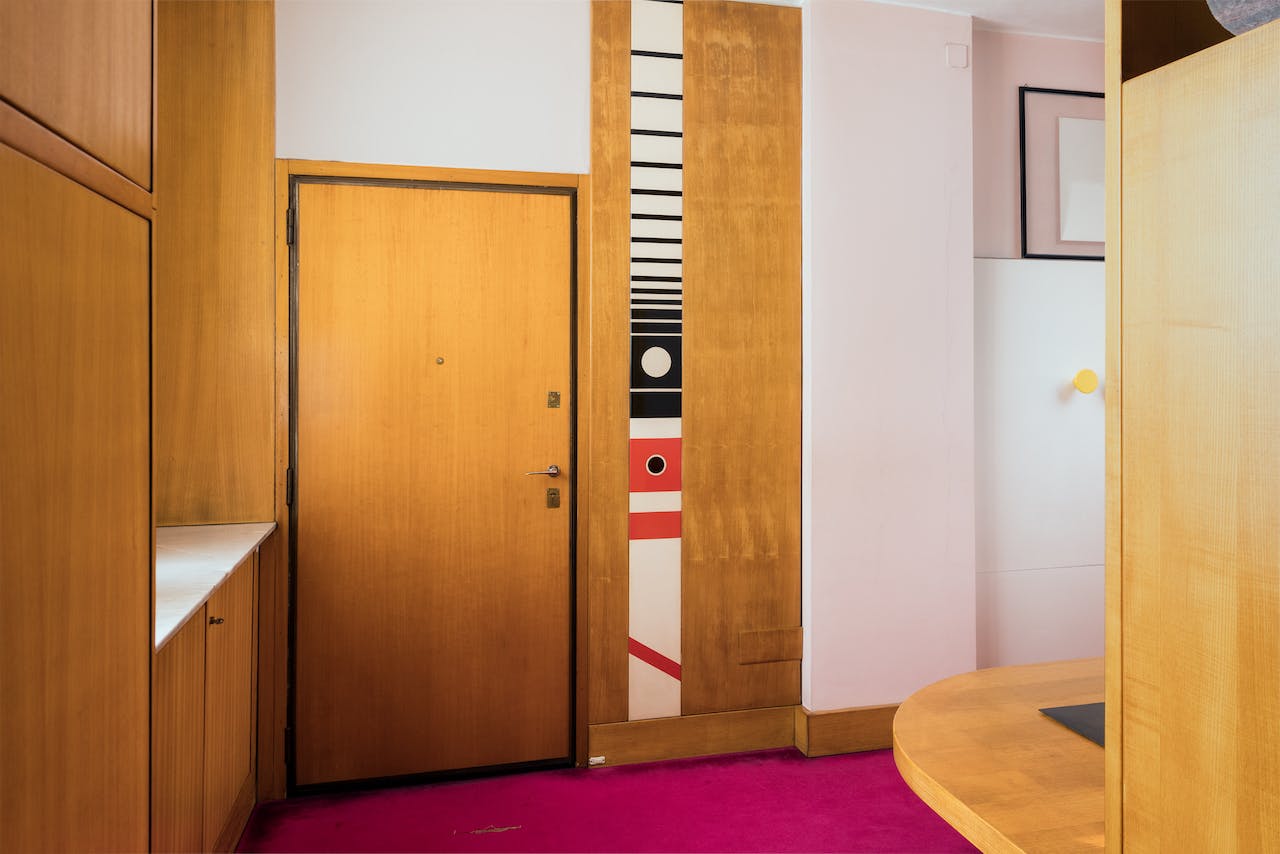
© Triennale Milano
Related events
